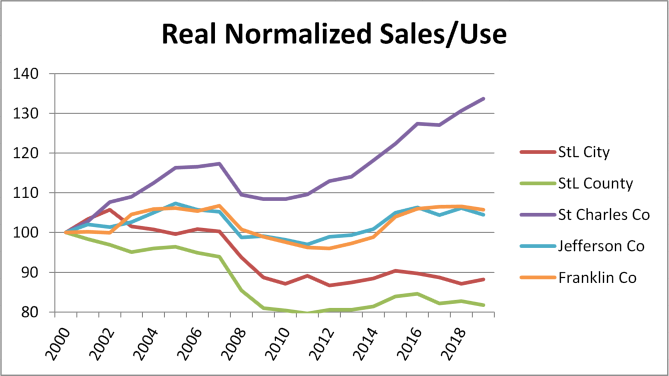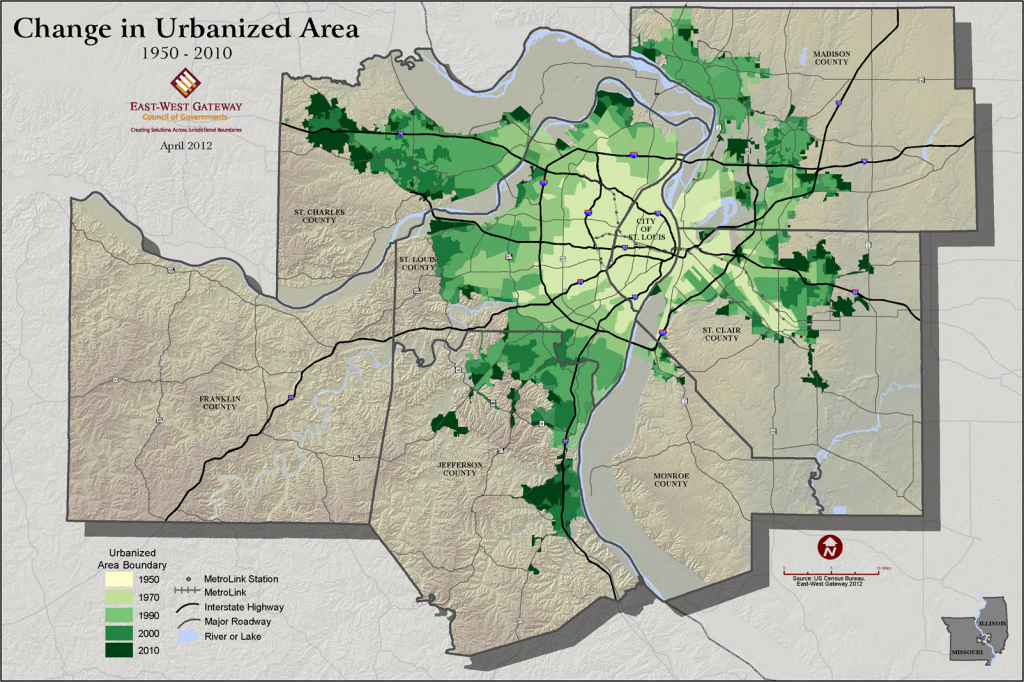In the celebration of the signing of the federal infrastructure bill, we got a glimpse of how house poor we are. During a media briefing on Monday County Executive Sam Page said that county had over $200M in unmet needs in fixing county-maintained roads. On top of that “there’s been serious deferred maintenance [on county buildings] for the last 10 years because we just haven’t had the money.” Earlier this month the county found out the headquarters in Clayton would need $50M to fix the deferred maintenance and meet the latest fire code which requires sprinklers. On top of that the 2022 budget estimates that there is an additional $150M worth of repairs to other county facilities.
Stltoday – St. Louis-area leaders scope out infrastructure opportunities as Biden signs plan into law
StlToday – St. Louis-area leaders scope out infrastructure opportunities as Biden signs plan into law
St Louis County – Preliminary 2022 Budget Letter

How have these liabilities built up? Several reasons. One is the overreliance on unreliable sales taxes. St. louis County taxable sales never recovered from the Great Recession. In real dollars taxable sales and use are down 18% from 2000 levels. Another is inflation eating up the gas tax which hadn’t ben raised in 25 years until this October. A portion of the state’s gas ax is distributed to counties. Another is that road financing is run like an unfunded pension system- that is promises are made (build a road and promise to maintain and eventually replace it), but no money is set aside to met those predictable costs. To do that though would mean higher taxes, building less, or crowding out other things, responsible yes, but not politically popular.

A major reason is that we’re house poor, stretched too thin. By spreading out the region and having a lot of municipal fragmentation, we’ve burdened each with more and more to take care of. St. Louis County’s population has grown only 5.5% in the last 50 years while the amount of pavement, feet of pipe and wire, municipal facilities, etc each resident is on the hook for has outpaced that meager population growth.
Strong Towns – No New Pipes
But we’re wealthier and can afford more things, right? Median family income in St. Louis County in 1970 was $12,375, $84,000 in 2019 dollars. In 2019 it was $94,569, a 12.6% increase in 50 years. Income hasn’t kept up with the infrastructure liabilities we’ve taken on. Government’s efforts to coerce people to drive more by rendering cheaper and safer choices impractical through spreading out has been doubly burdensome.
Strong Towns – Lafayette Pipes and Hydrants
Most of the development during that time has been low-productivity and auto-oriented which often doesn’t cover the long-term costs of the infrastructure built to serve it. We failed to do the math to weigh the productivity of land uses versus the long-term liabilities of providing infrastructure and services to them. We fell for the illusion of wealth presented by the post-World War II experimental development pattern.
Strong Towns – The Growth Ponzi Scheme
The numerous municipalities have piles of liabilities too. We got an indication of the magnitude in the failed proposition to create a city-wide Transportation Development District (TDD) in Kirkwood which would add a 1% sales tax expected to raise over $5M per year. In 2019 the city estimated it had a backlog of $38M in unmet street maintenance. They currently budget $1.8M per year for such maintenance. At that rate it would take 21 years to cover that liability. But over the next 21 years there will be other liabilities mounting that need to be addressed. If a wealthy place like Kirkwood can’t keep up, what amounts of liability time bombs lay out there in the other fragments?
NextSTL – Leverage The Lots, Balance the Books in Kirkwood
The low-productivity development patterns built in the past without regard to the cost to serve them have left us holding the bag today. When you’re house poor you can’t afford to do other things. Building too much has come with an opportunity cost. We can choose higher taxes, a lower level of infrastructure and services, or increase land productivity. Do we wait and hope for federal infrastructure bills to help plug the gap under their terms or do we build in a way that creates enough wealth cover liabilities that need to be addressed?
Strong Towns – Five Ways Federal Infrastructure Spending Makes Cities Poorer
The media briefing referenced earlier-

